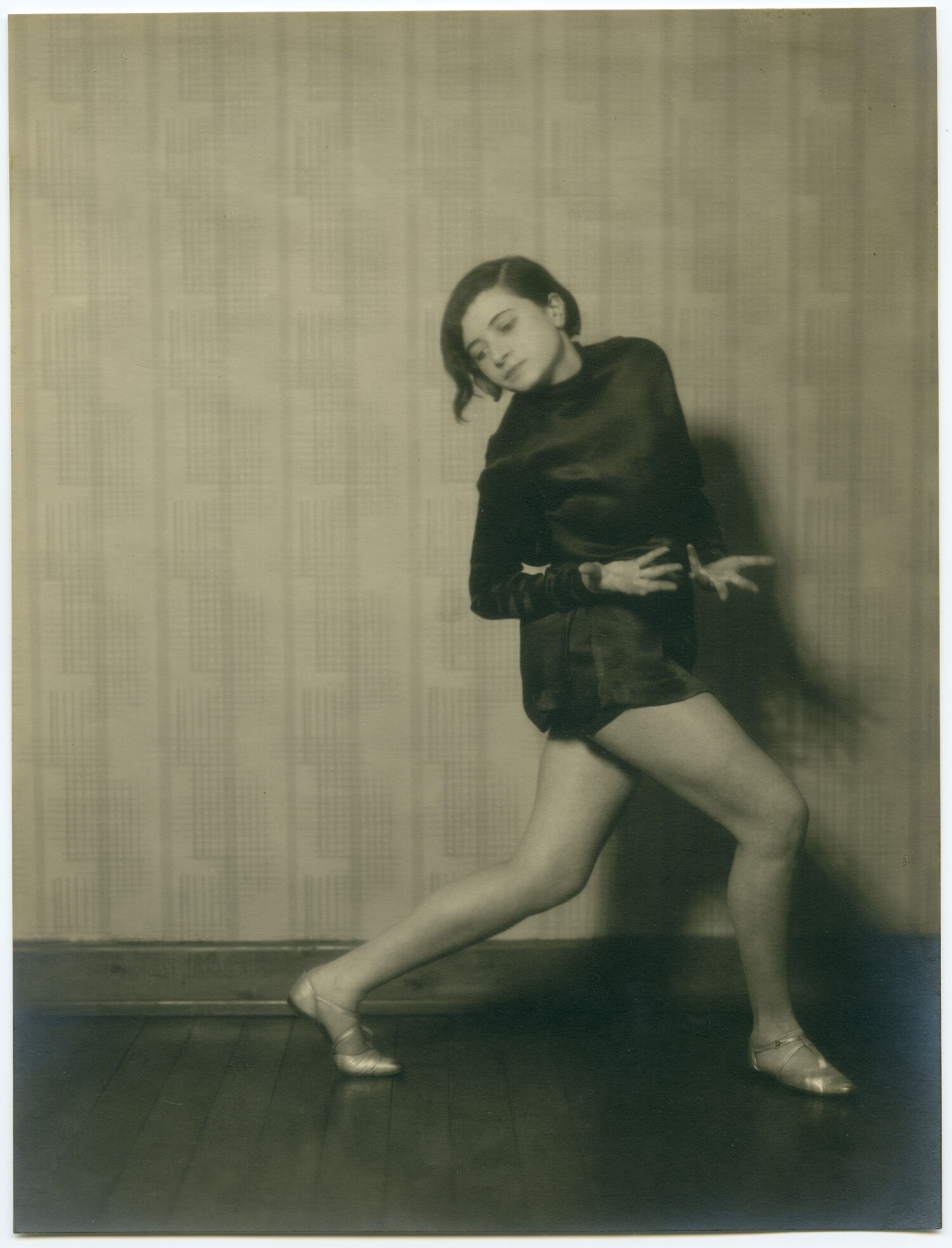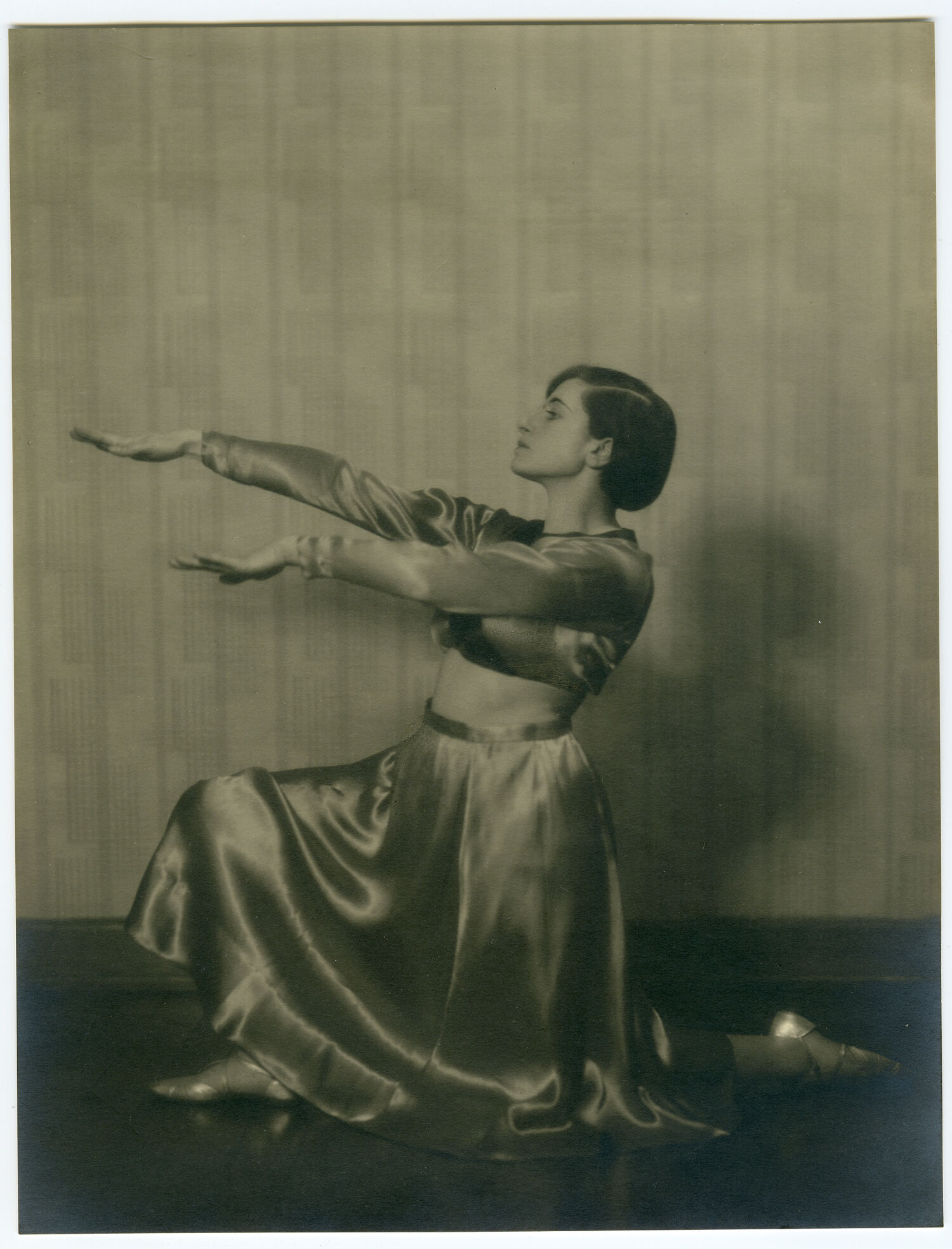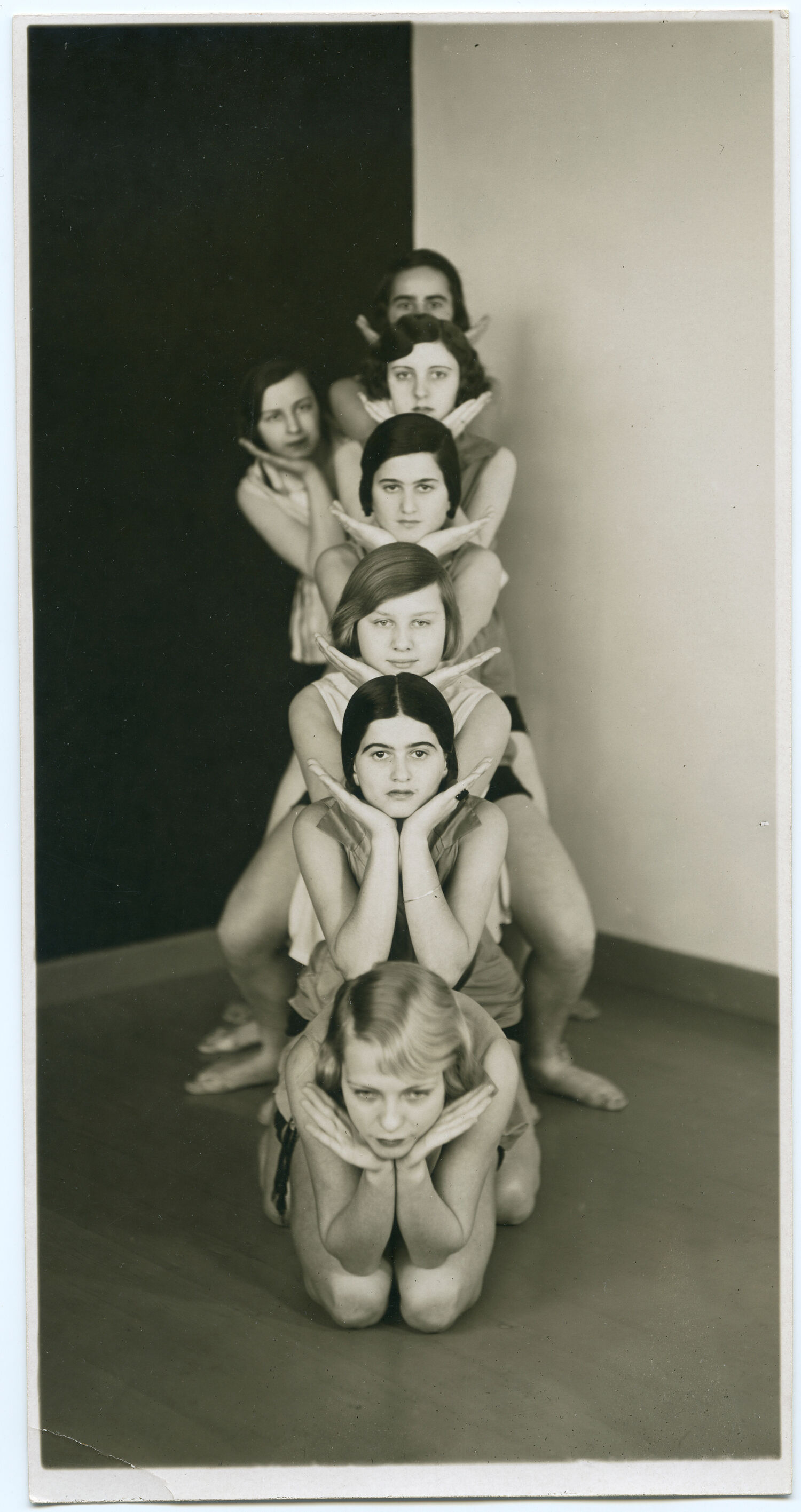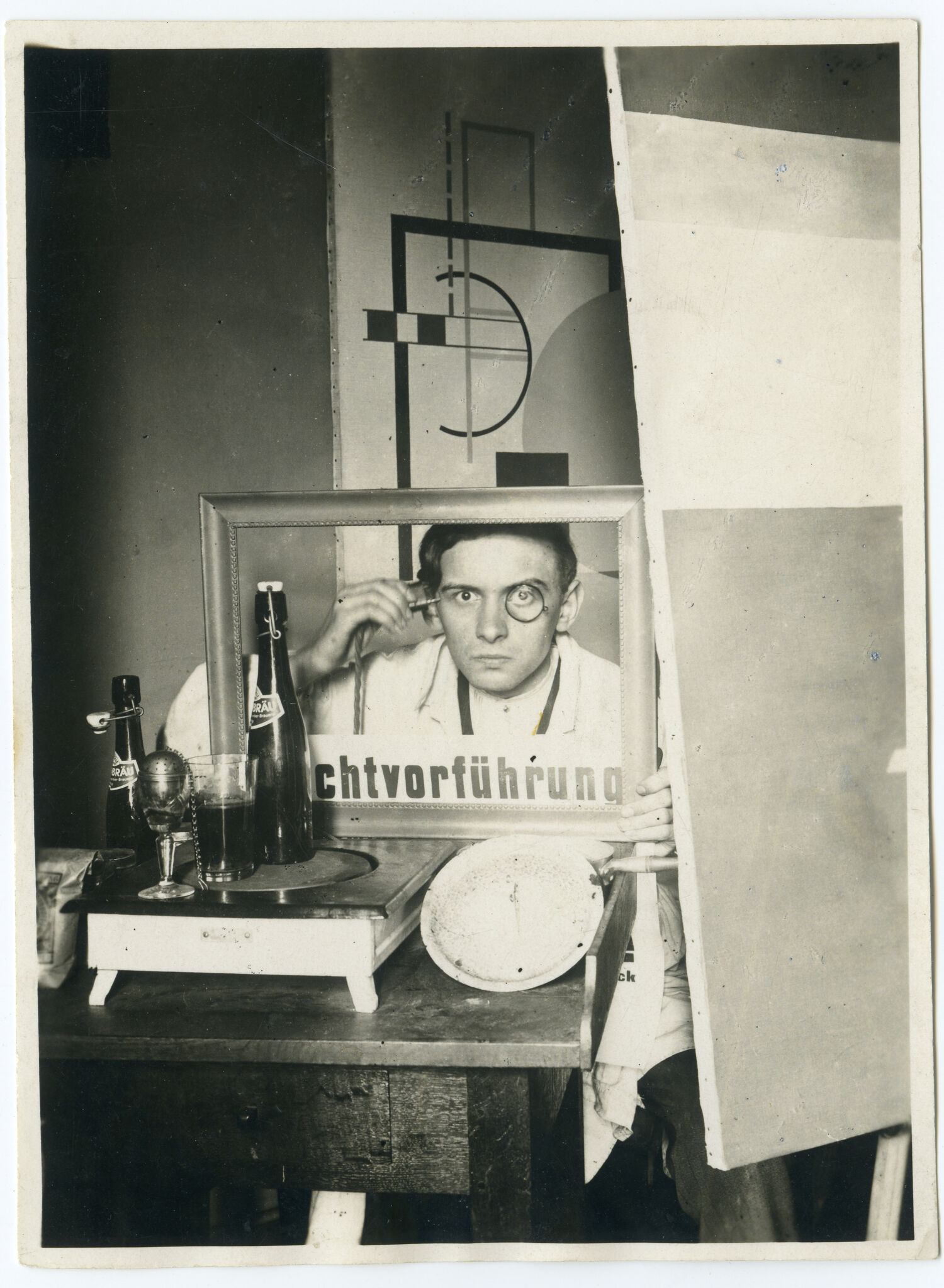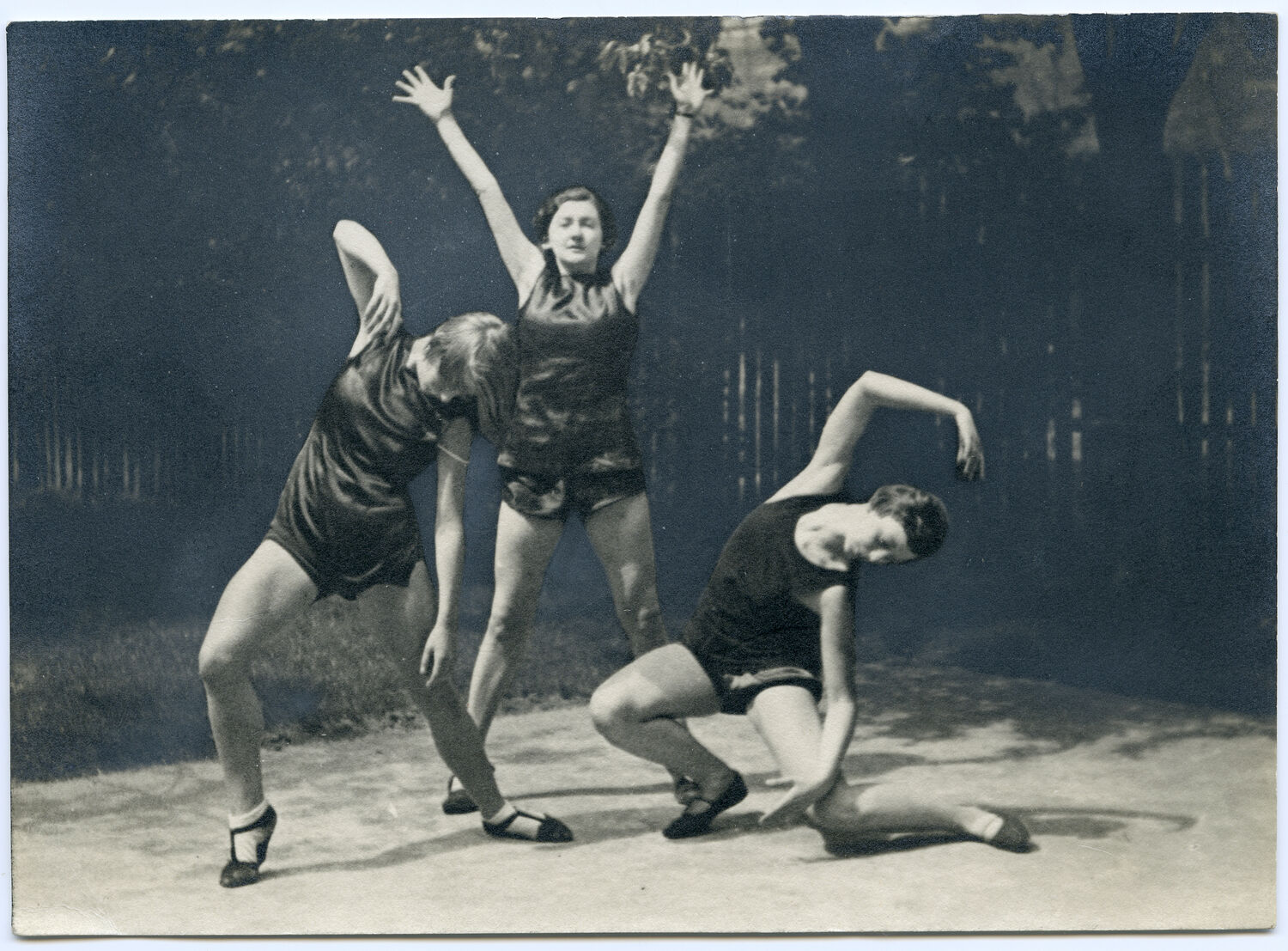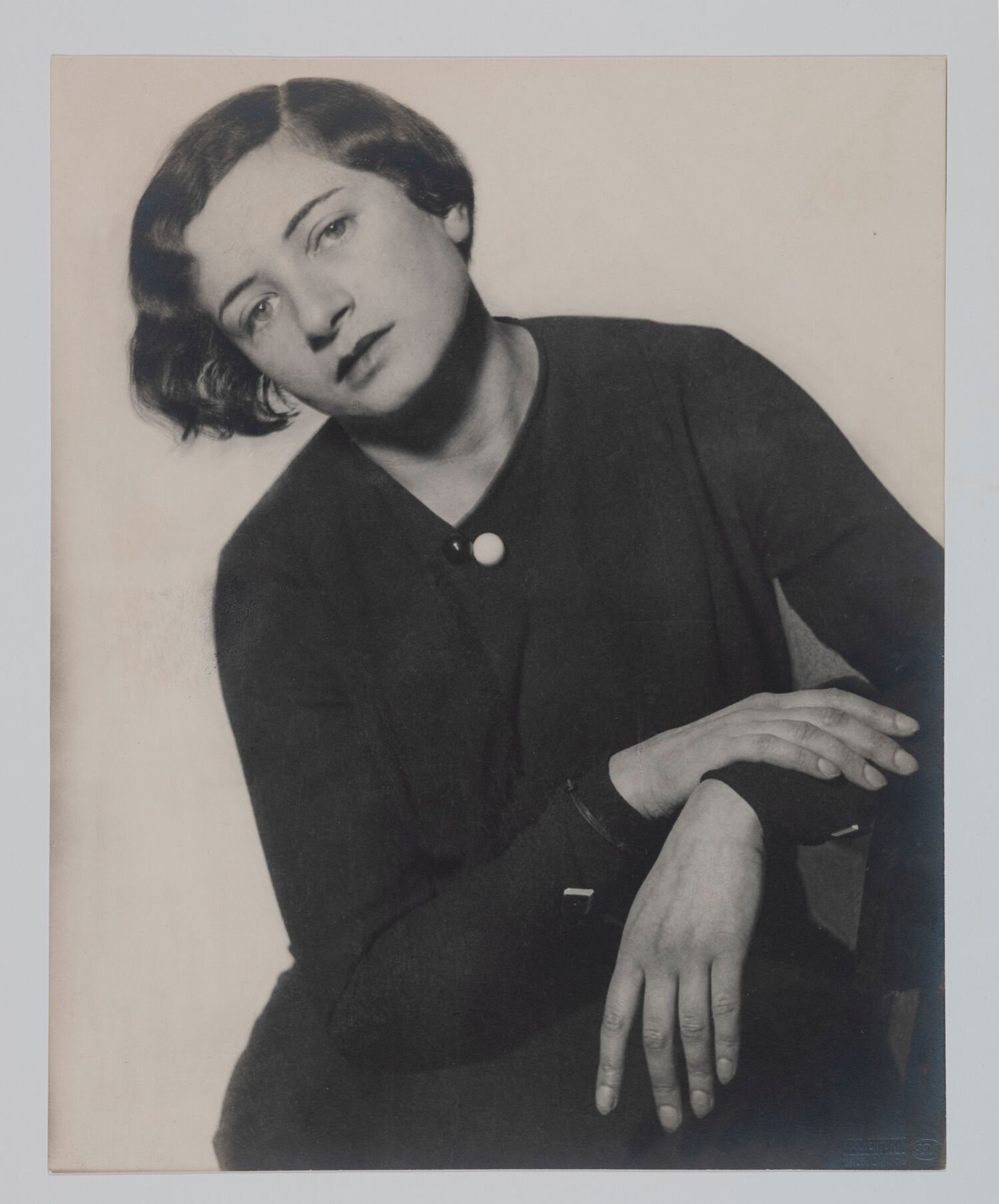26 Sep 25 — 8 Feb 26
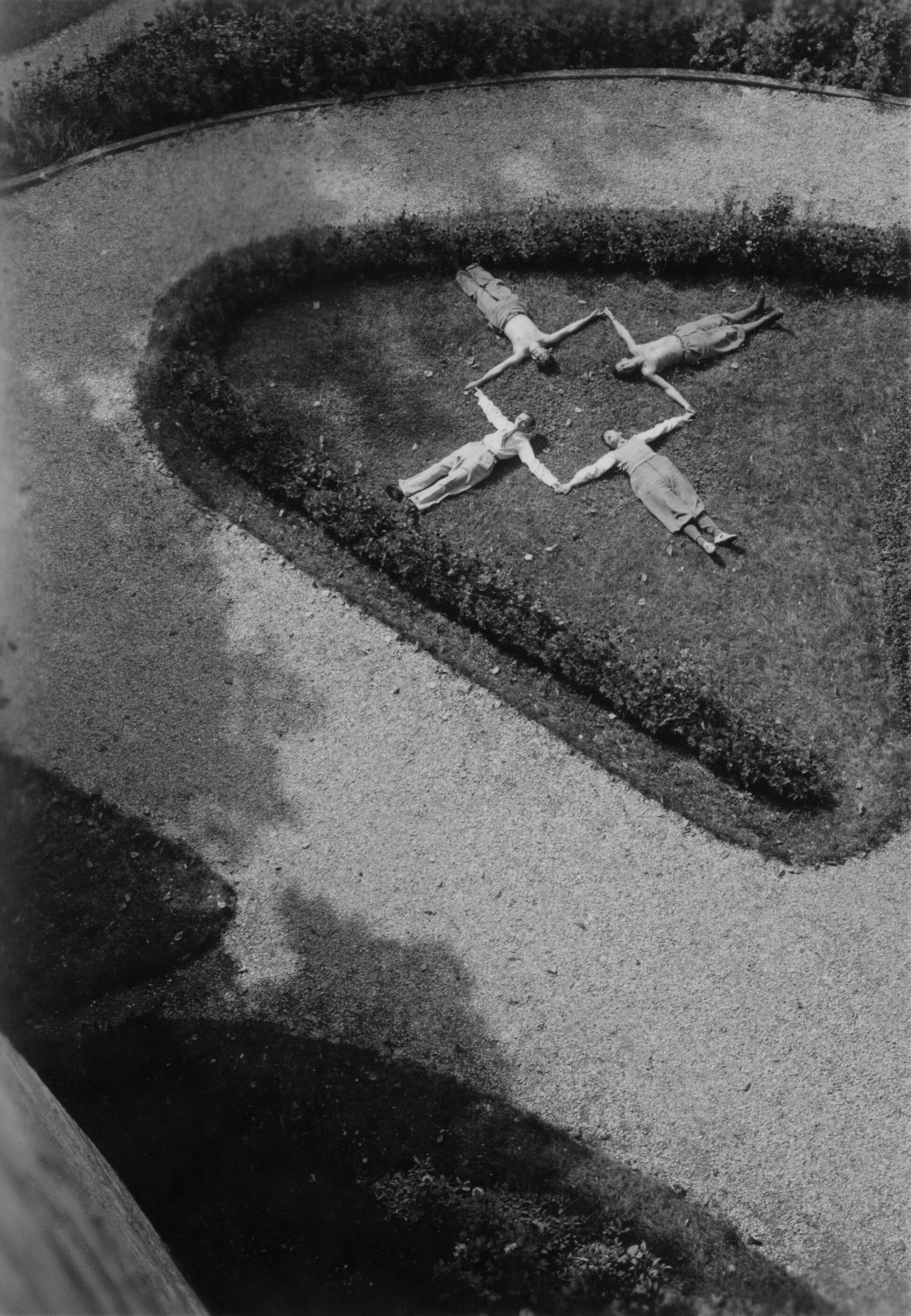
László Moholy-Nagy, View of the park at La Sarraz Castle (bottom left: Friedrich Vordemberge-Gildewart), August 1931
The Jewish dancer and choreographer Ilse Leda and the constructivist artist Friedrich Vordemberge-Gildewart met around 1925 in Dadaist-influenced Hanover, in the circle of Joachim Ringelnatz and Kurt Schwitters. While her career came to an abrupt end in 1937 due to National Socialism, Vordemberge-Gildewart was able to continue working in hiding in exile in the Netherlands. The fact that Leda's influence on his works was greater than previously assumed from this tragic point in their relationship onwards is the subject of the cabinet exhibition, which tells the story of a great love between two people who were closely connected artistically.
Friedrich Vordemberge-Gildewart (1899—1962), an artist associated with the greats of his time, and Ilse Leda (1906—1981), a dancer, dance teacher, and choreographer, met when the international avant-garde of constructive, non-representational abstraction, with its new, clear forms of photography, film, and dance, made a stop in Hanover. Both were deeply impressed by the great utopia of a world improved by clear design and beauty. They adopted these principles for themselves, also as an expression of their thinking and working — through the times of upheaval, emigration to Amsterdam, and the arrival at a very personal art of formal reduction and brilliant colorfulness, of lightness and deep humanity. Sensitive texts and impressive contemporary photographs depict a respectful relationship between two artists on equal footing who supported and inspired each other: they reflect the image of a great love that has endured all the upheavals of this period.
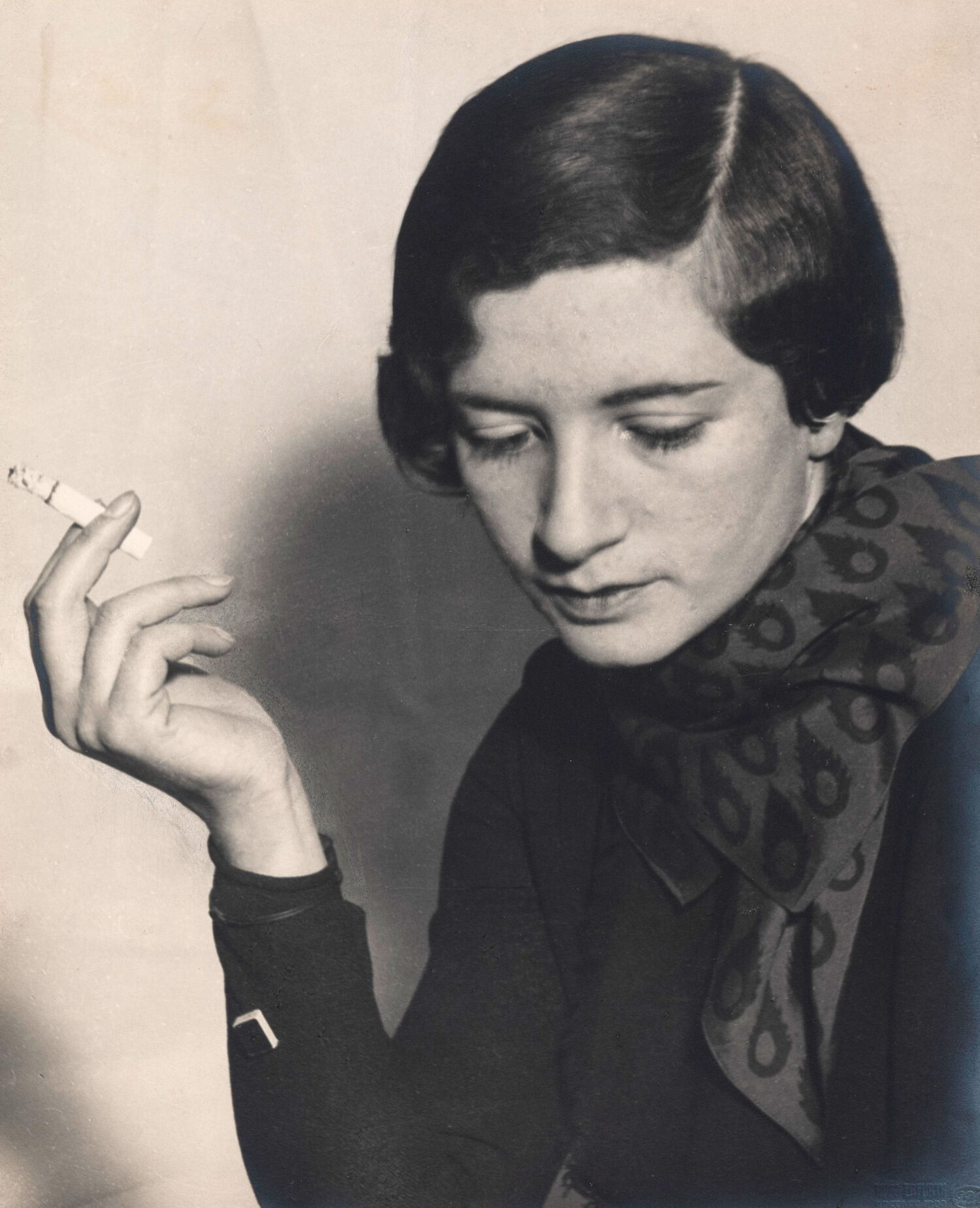
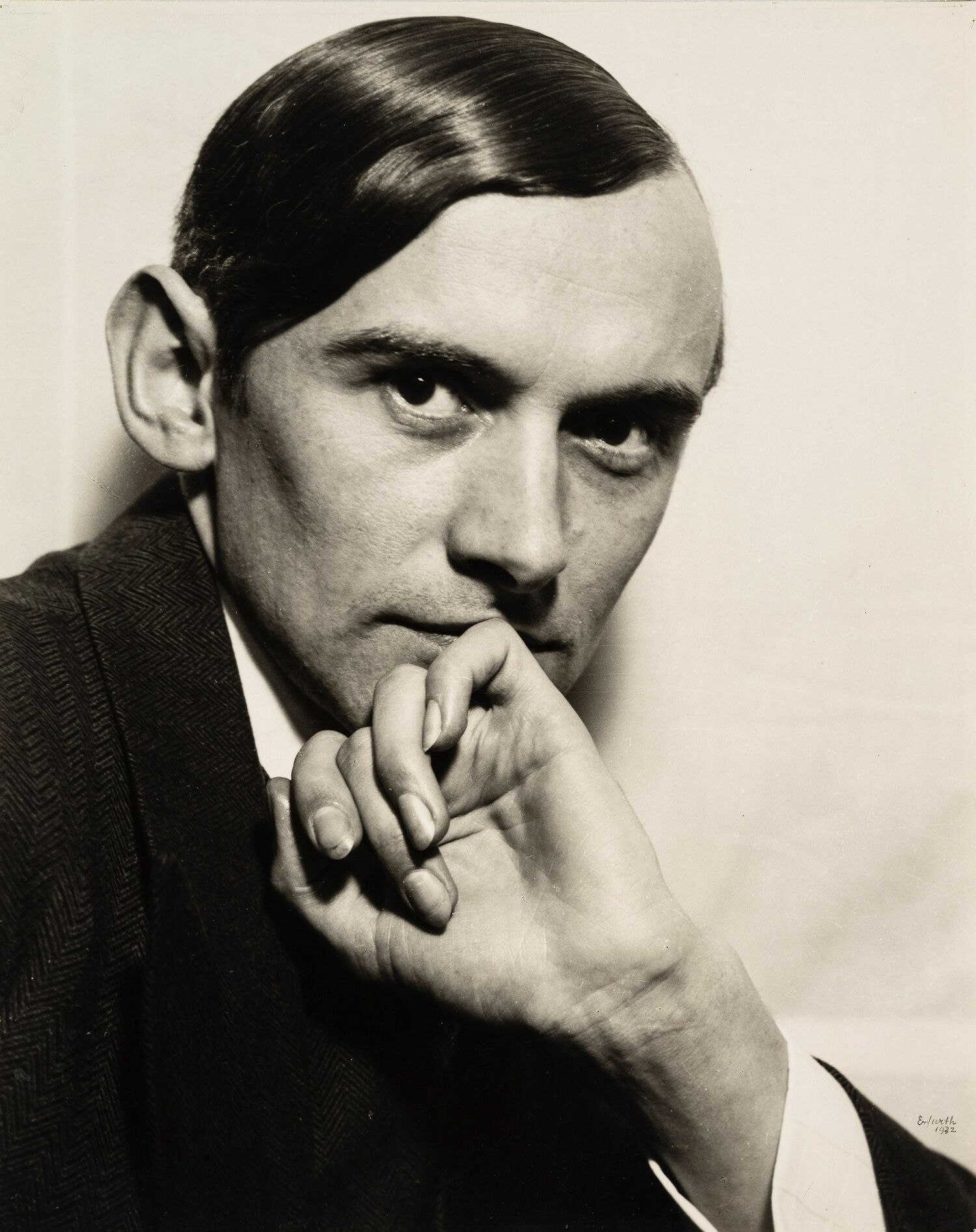
compiled by Arta Valstar-Verhoff and Roman Zieglgänsberger
Friedrich Vordemberge was born on November 17, 1899, in Osnabrück, and Ilse Leda was born on May 15, 1906, in Hanover. In 1918, Vordemberge completed his carpentry apprenticeship at his parents' business and moved to Hanover a year later to study interior design at the School of Arts and Crafts and the Technical University. At the same time, he worked as a sculptor in Professor Ludwig Vierthaler's private studio. Leda graduated from school in 1924 and began commercial training at her parents' business at 47 Sedanstraße.
Around 1925, Ilse Leda and Friedrich Vordemberge-Gildewart met in the circle of the Kestner Society (Königstraße 8), where the painter, who was now working freely in the constructivist style, had rented a studio in 1924 and founded the Group K. Their mutual friend Kurt Schwitters wrote the nickname “DADÁ” in a guest book entry for Leda, which Vordemberge-Gildewart would henceforth use to refer to her privately. In 1927, Leda began her training as a dancer and dance teacher with Yvonne Georgi and Harald Kreutzberg and opened her first dance school (Königstraße 50a) opposite the Kestner Gesellschaft in 1929, moving it to her parents' building complex in 1930 (Sedanstraße 47) — Vordemberge-Gildewart designed advertising material for both dance studios. In the same year, the painter moved into a new live-in studio (Lister Straße 24), where the couple officially lived together for the first time after their marriage on June 29, 1932. Ilse Leda kept her name after the wedding. Friedrich Vordemberge had already added the suffix “Gildewart, ” the street name of his birthplace in Osnabrück, to his name at the beginning of his time in Hanover — in order to distinguish himself from his cousin, who was also a painter and had the same name.
The couple's move to Berlin in the spring of 1936 — Hanover, as the nucleus of the German Dada movement, soon became the focus of the National Socialists — was explained by the greater anonymity offered by a metropolis. In Berlin, Ilse Leda continued to perform with the First Jewish Dance Group until August 1937, but now under the name Ilse Vordemberge. The address of her home and dance studio is recorded as “Bleibtreustraße 25, Berlin W 15.” After Friedrich Vordemberge-Gildewart was represented at the Berlin station of the Entartete Kunst exhibition (February 26—May 8, 1938) and was now also under observation, it became necessary for the couple — a Jewish woman and an ostracized painter working without objects — to flee. They succeeded because Vordemberge-Gildewart's participation in an exhibition at the Stedelijk Museum in Amsterdam was combined with the inconspicuous transport of their private belongings.
The couple lived in Amsterdam from 1938, initially at Lekstraat 138/I. While Vordemberge-Gildewart painted and carried out typography commissions illegally underground, Ilse Vordemberge-Leda, as she officially called herself after moving to Amsterdam, was no longer able to pursue her profession. She worked as a secretary in the “branch office” of the Joodsche Raad voor Amsterdam, was baptized in 1940, and was exempted from wearing the Jewish star in 1943. Materials in the Vordemberge-Gildewart Archive of the Museum Wiesbaden (including passport photos of people who have not yet been identified) and the couple's close connection to the resistance fighter, publisher, and printer Frans Duwaer suggest that Leda, protected by her “smoothed” personal documents, used her inconspicuous position in Amsterdam after the Nazi occupation to help Jews escape with forged passports. In 1943, the couple moved to Nicolaas Maesstraat 22 in the Oud-Zuid district. Five years after the end of the war, Leda and Vordemberge-Gildewart renounced their German citizenship and obtained Dutch passports.
Due to Vordemberge-Gildewart's appointment by Max Bill as head of the Department of Visual Communication at the newly founded University of Design, the couple moved back to Germany in 1954, settling in Ulm. They lived on the HFG campus at Am Hochsträß 24. This was the last place the couple lived together. Vordemberge-Gildewart died on December 19, 1962, in Ulm. In addition to 223 free compositions, his work includes numerous typographic and architectural designs, drawings, watercolors, collages, and a few prints.
About a year after her husband's death, Ilse Leda, who now went by her maiden name again, moved to Stuttgart (Hauptmannsreute 46b). From there, she coordinated the construction of a modern villa in Switzerland (Rapperswil, Rütistrasse 44), where she moved in 1971. In 1977, “Ilse Engelina Vordemberge (née Leda), artist and widow of Vordemberge-Gildewart, ” initiated the “establishment of the Vordemberge-Gildewart Foundation.” Upon her death on October 5, 1981, the foundation for the promotion of young artists and the support of research on the artist was entered in the commercial register of the canton of St. Gallen, with its headquarters in Rapperswil. To date — 41 scholarships have been awarded throughout Europe — including in Germany, England, Italy, Austria, the Netherlands, Poland, and Switzerland.
